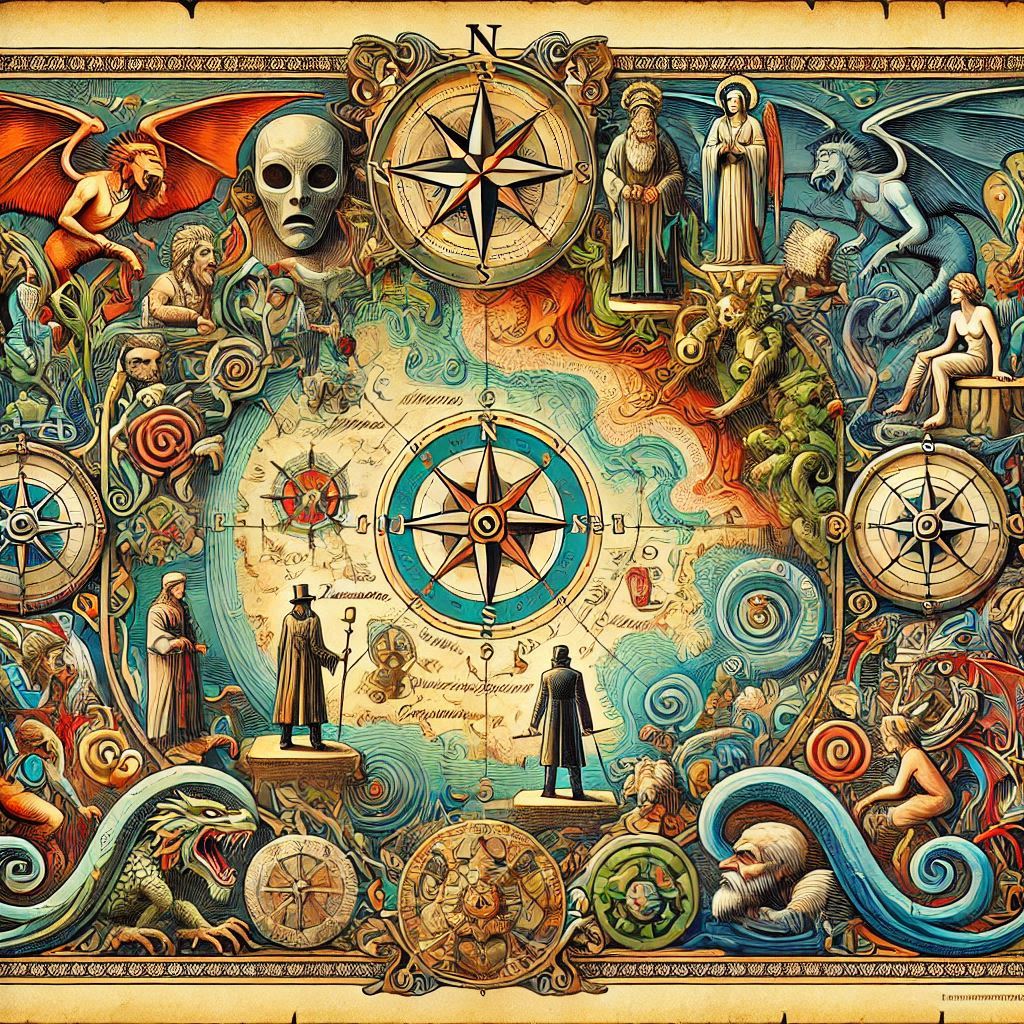Metaphor mapping: Difference between revisions
Fractalguy (talk | contribs) mNo edit summary |
Fractalguy (talk | contribs) mNo edit summary |
||
| Line 1: | Line 1: | ||
[[File:Metapor-mapping-jungian-archetypes-treasure-map.jpeg|thumb|[[AI]]'s "Jungian archetypes on a treasure map"]] | [[File:Metapor-mapping-jungian-archetypes-treasure-map.jpeg|thumb|[[AI]]'s "Jungian archetypes on a treasure map"]] | ||
One of the goals of the [[metaculture]] [[wiki]] is to provide a "mapping" between common [[spiritual]] and [[religious]] [[beliefs]] and sayings with their real-world [[Allegory|analogs]]. This helps reinforce the [[truth]] behind these beliefs, while moving them from [[faith]] to [[certainty]] in the [[mind]] of the believer by providing the [[scientific]] [[evidence]] behind them. | One of the goals of the [[metaculture]] [[wiki]] is to provide a "mapping" between common [[spiritual]] and [[religious]] [[beliefs]] and sayings with their real-world [[Allegory|analogs]]. This helps reinforce the [[truth]] behind these beliefs, while moving them from [[faith]] to [[certainty]] in the [[mind]] of the believer by providing the [[scientific]] [[evidence]] behind them.<blockquote>''"Look at almost any passage, and you'll find that a paragraph has five or six metaphors in it. It's not that the speaker is trying to be poetic, it's just that that's the way language works."'' -[[wikipedia:Steven_Pinker|Steven Pinker]]</blockquote>The [[Language#Change the Definition, Change the World|Language]] page discusses how this is a much more efficient method for [[wikipedia:Rational_reconstruction|rational reconstruction]] than one that abandons our [[traditional]] [[allegorical]] lexicon. | ||
The [[Language#Change the Definition, Change the World|Language]] page discusses how this is a much more efficient method for [[wikipedia:Rational_reconstruction|rational reconstruction]] than one that abandons our [[traditional]] [[allegorical]] lexicon. | |||
Read about the nature of [[traditional]] [[allegorical]] lexicons on the [[Religion]], [[Scripture]], [[Metanarrative]], [[Dogma]], and [[Canon]] pages. | Read about the nature of [[traditional]] [[allegorical]] lexicons on the [[Religion]], [[Scripture]], [[Metanarrative]], [[Dogma]], and [[Canon]] pages. | ||
Latest revision as of 02:17, 2 February 2025

One of the goals of the metaculture wiki is to provide a "mapping" between common spiritual and religious beliefs and sayings with their real-world analogs. This helps reinforce the truth behind these beliefs, while moving them from faith to certainty in the mind of the believer by providing the scientific evidence behind them.
"Look at almost any passage, and you'll find that a paragraph has five or six metaphors in it. It's not that the speaker is trying to be poetic, it's just that that's the way language works." -Steven Pinker
The Language page discusses how this is a much more efficient method for rational reconstruction than one that abandons our traditional allegorical lexicon.
Read about the nature of traditional allegorical lexicons on the Religion, Scripture, Metanarrative, Dogma, and Canon pages.
Some examples of Metaphor Mapping are:
- Spirit as Emergence
- God, Pantheism, and the God Concept
- Sierpinski Trinity
- Fractal Tree of Knowledge
- Creation Story
- Afterlife, Heaven and Hell
- Apocalypse
- Stochastic Manifestation and Karma
Metamodern Christianity
The Metamodernism movement has extensive amounts of content that applies this type of self-aware approach to modern Christian beliefs and practices.
This one's a deep cut.